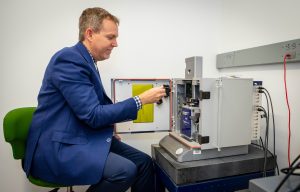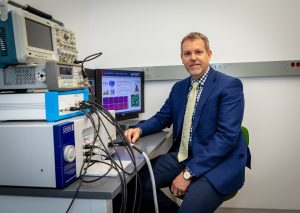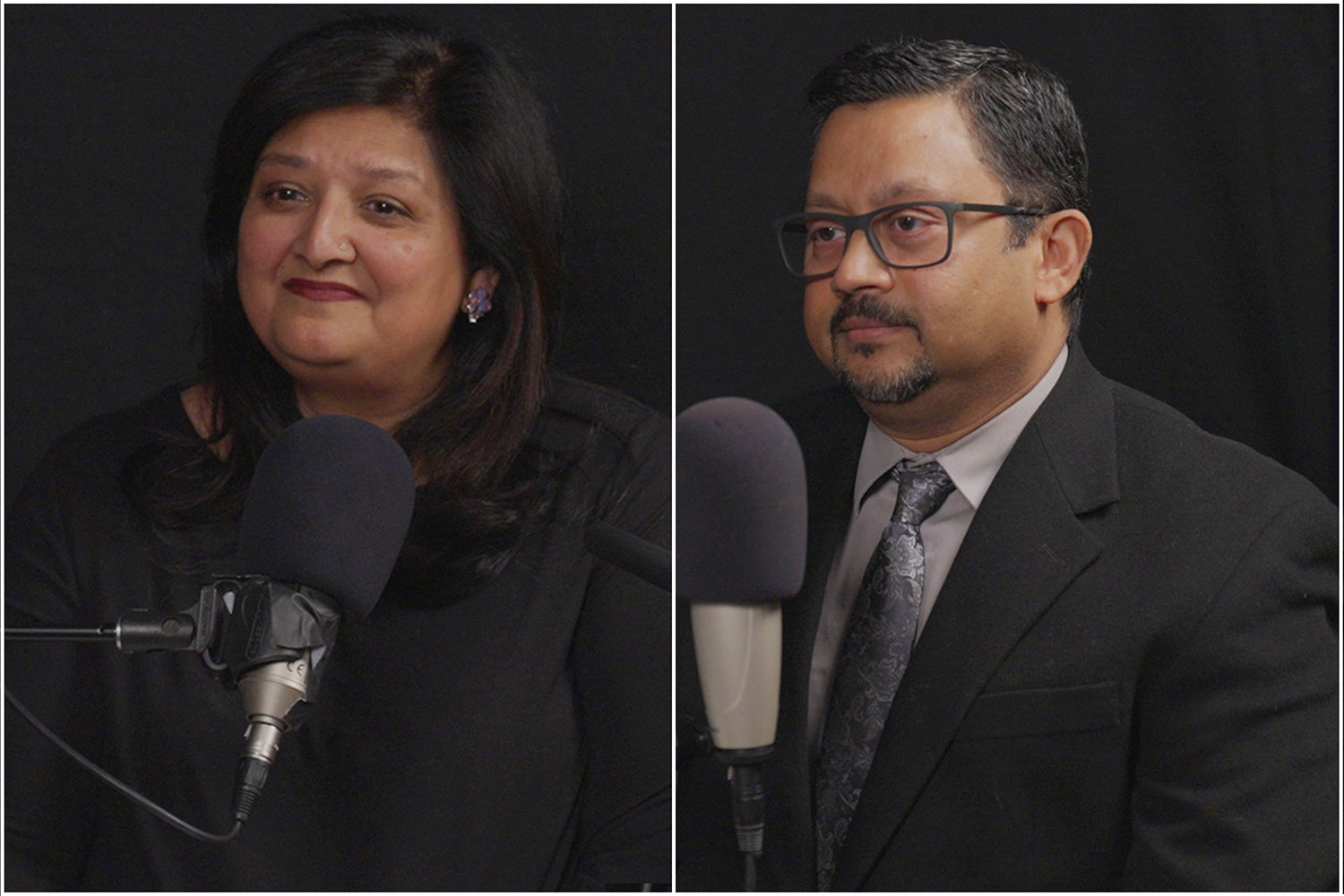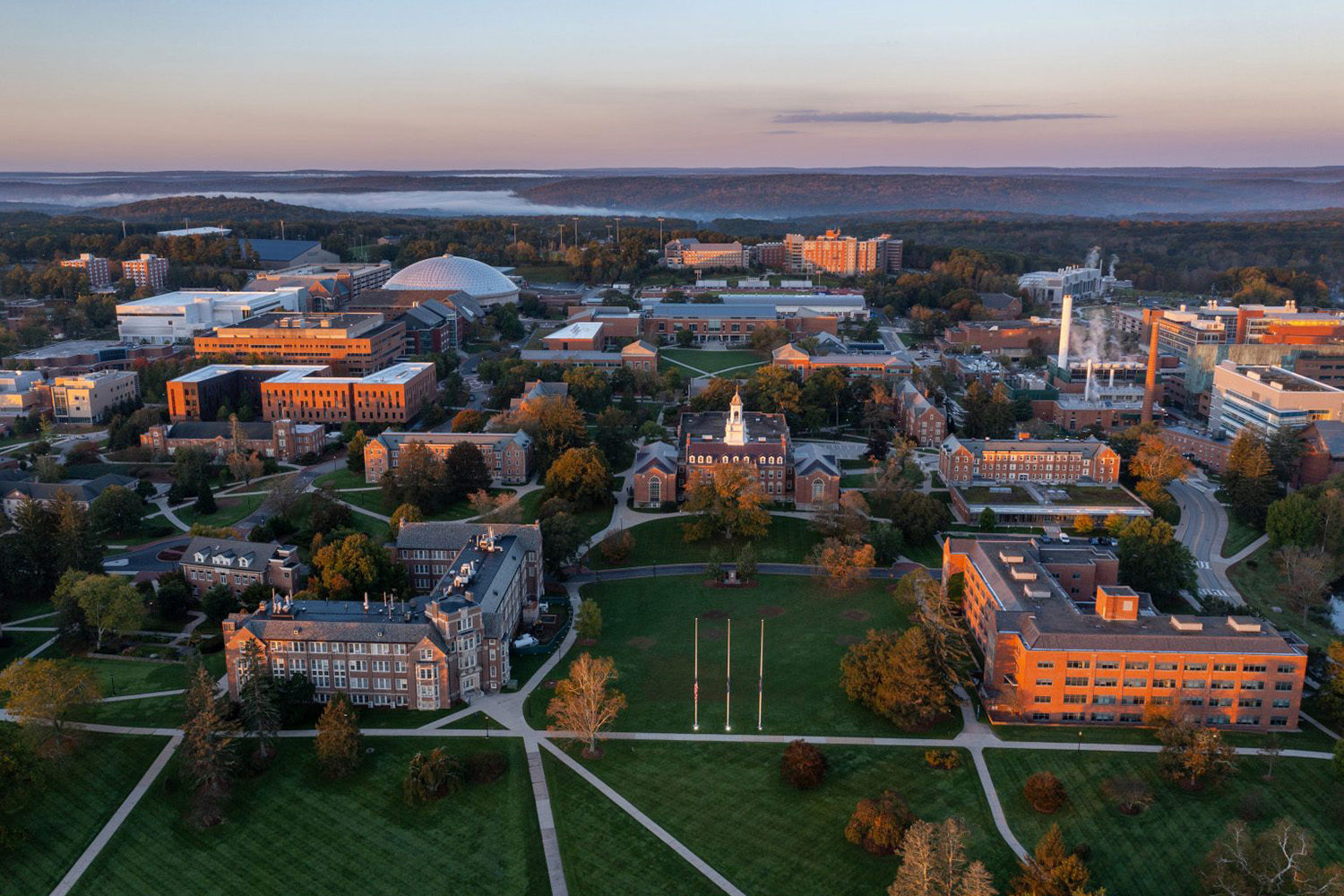While the UConn basketball team moves forward into March Madness, another team of Huskies is hard at work for the love of the game.
One UConn College of Engineering department’s March Madness bracket includes creating the world’s smallest basketball.
Researchers from the materials science and engineering department, housed in the new Science 1 building, has produced a basketball and Husky logo with the best-depth-resolution nanolithography in the world.
“After we determined that our new technique worked, we wanted to do an eye-catching school spirit-related project,” says department head Bryan Huey. “A basketball and the Husky logo seemed to be a perfect way to celebrate UConn. It was fun watching our project gradually (and microscopically) take shape, and we couldn’t be more pleased with the results!”
The pictures were “carved” into a crystalline substrate. Laterally, the patterns are about 4-5 um. For comparison, a human hair is roughly 50 um. And the depth of the engraving is only 5 nm, which is another 1000x smaller than the width. Hence, the world’s smallest basketball was chiseled here in Storrs.

The nanolithography implements a technique Huey’s team developed to nanomachine topographic patterns into material surfaces using Atomic Force Microscopy (AFM), and a unique iterative feedback approach that they developed.
The materials science and engineering faculty and students developed nRasp over the last few years exclusively at UConn. It is a substantial improvement over existing AFM-based nanomachining that does not incorporate the extra iterative feedback.
“This technology expands on techniques developed in the last 25 years within materials science,” Huey says. “The integrated feedback provides substantially more control, with error of only 0.5 nm. That’s less than just 5 layers of atoms.”
The iterative feedback system is the main novelty of the technology, as it facilitates the continuous improvement of the desired nanomachined pattern structure through the process.
“It’s like a sculptor, working with finer and finer precision as the envisioned pattern takes shape,” Huey says.
The primary work involved included conceptualizing the sequencing need to properly perform the method, writing custom code to externally control the nearly $500,000 microscope, and then lots of engineering and iterations to achieve such impressive nanopatterns and resolution.
Besides basketball and logos, the technology is used by Huey’s group for their pioneering Tomographic AFM work, studying future semiconductors, solar cells, metal alloys, and electromagnetic sensors—all with unprecedented nano-volumetric resolution. They especially use it to very carefully reveal sub-surface features, a little like an archeologist or paleontologist.

“We had some fun with that, creating microscopic dinosaurs, too,” Huey says.
In the future, they will use it for failure analysis, fundamental work on nanomanufacturing, and fabricating ultrafine features on otherwise difficult to manipulate materials.
“School spirit runs deep within our schools and departments,” says Associate Dean for Research and Graduate Education Leslie Shor. “Research innovation and providing a top-quality engineering education is our mission. We are lucky to be able to do that, while still bleeding blue with pride for our top athletes.”
Shor is an affiliated faculty member of the Institute of Materials Science.
The UConn men’s and women’s basketball teams currently rank first in the Big East. The NCAA tournaments start this week.
More information about the MSE department is available online.



